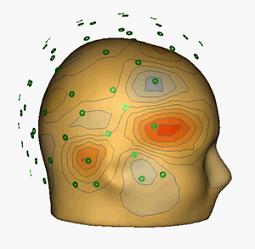However, a major breakthrough may now be on the horizon, thanks to a bourgeoning collaboration of the world's leading experts in hearing, engineering and cognitive development.
The international team, comprising experts from Macquarie University, the Kanazawa Institute of Technology (KIT), Cochlear Limited, National Acoustic Laboratories, and the CSIRO, met at Macquarie University this week to discuss plans for a world-first brain imaging device that will allow scientists to test the auditory cortex of hearing impaired babies fitted with cochlear implants.

Such a device would improve hearing specialists' ability to accurately assess the effectiveness of a baby's implant and then make adjustments if needed - even before the child can speak - to give them the best hearing possible and assist with language development.
"Ultimately the aim is to be able to better adjust the implants while the children are still very young - only babies - so their cognitive development will proceed normally from a very early age," said Professor Stephen Crain, from Macquarie University's Centre for Cognitive Science.
"At the moment accurately measuring how well a cochlear implant is working in a very young child is difficult. This is because babies and toddlers are unable to communicate effectively using language, so they can't describe to scientists what they are hearing or how loud and clear something may sound to them," he said.
"If we can achieve early implantation and then adjust the implant to the child's brain, we believe we can make implants more effective."
Crain and his team devised the first brain imaging system in the world that can measure the magnetic fields generated by a child's brain during cognitive processing. Called a MEG system - short for magnetoencephalography - the device was developed by scientists from Japan's Kanazawa Institute of Technology (KIT) and is now housed at Macquarie University's cognitive science laboratory.
"It is probably possible to construct a map of the auditory cortex of a child with normal hearing using our existing child MEG system, but if we tried to test a child with a cochlear implant, the system would be overwhelmed by the powerful signals emitted by its electronic components," Crain said.
"In order to successfully develop a system which can be used with these children, we need to invent a completely new way of shielding the MEG sensors from the powerful magnetic waves generated by a cochlear implant."
If such a device can be developed, Crain and his team will establish 'normal' cognitive function by using a control group of children without hearing impairment, before working with young children fitted with cochlear implants.
Work is expected to commence on a prototype of the new system early next year.
Taken from www.mq.edu.au/.

